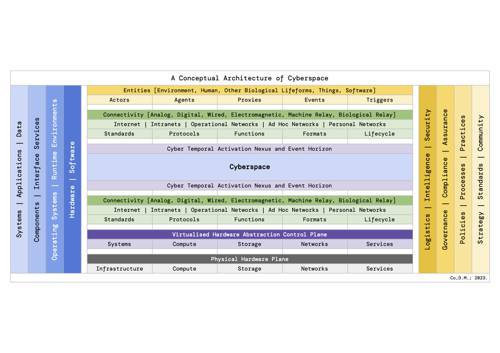
FAQ About The Evolution of Conceptual Architecture

What is conceptual architecture?
Conceptual architecture is an approach to architecture that emphasizes ideas and abstract thinking rather than traditional physical design. It focuses on pushing the boundaries of architecture by exploring innovative concepts that challenge conventional frameworks, often resulting in structures that are theoretically provocative rather than practical buildings.

How does conceptual architecture differ from traditional architecture?
While traditional architecture often prioritizes functionality, aesthetics, and compliance with physical and environmental constraints, conceptual architecture prioritizes theoretical exploration and innovation. It often leads to projects that are not constructed, as they serve as a means of questioning and redefining architectural norms rather than producing usable buildings.

What are some famous examples of conceptual architecture?
Some famous examples of conceptual architecture include ‘Walking City’ by Archigram, a visionary project proposing mobile, self-sufficient urban dwellings, and Lebbeus Woods' speculative designs, which explore the boundaries of architectural form and the human experience through highly imaginative drawings.

Who are key figures in the conceptual architecture movement?
Key figures in the conceptual architecture movement include Peter Eisenman, whose works often explore the relationship between architecture and philosophy, and Rem Koolhaas, known for integrating cultural theory into his architectural concepts. Archigram, a British avant-garde architectural group, is also noted for its influence in the 1960s and 70s.

How has conceptual architecture influenced modern design practices?
Conceptual architecture has significantly influenced modern design practices by encouraging architects to think outside traditional boundaries and consider broader cultural, social, and technological contexts. This has led to the development of more experimental buildings and spaces that incorporate novel materials and design philosophies.

What role does technology play in conceptual architecture?
Technology plays a crucial role in conceptual architecture by enabling architects to visualize and test ideas that were previously unattainable. Advanced software for design and simulation allows for the creation of complex forms and environments, enhancing the potential for innovative and speculative architecture.

What are the criticisms of conceptual architecture?
Conceptual architecture is often criticized for being overly theoretical and disconnected from practical concerns such as usability, cost, and environmental impact. Critics argue that its focus on ideas over function can result in projects that are neither feasible nor environmentally sustainable.

How is conceptual architecture taught in architecture schools?
In architecture schools, conceptual architecture is often integrated into the curriculum through design studios and theoretical courses that encourage students to explore innovative ideas without the constraints of conventional design limits. Students are pushed to develop unique design philosophies that consider conceptual frameworks and abstract thinking.

How has conceptual architecture evolved over time?
Conceptual architecture has evolved from early visionary projects that were largely theoretical to a more integrated approach that blends conceptual thinking with practical applications. This evolution reflects the growing capabilities of technology and the changing cultural and societal demands on architectural design.

Can conceptual architecture be sustainable?
Yes, conceptual architecture can be sustainable when it incorporates eco-friendly materials and considers the environmental impact within its abstract frameworks. Despite its theoretical roots, many architects use conceptual architecture to explore innovative sustainability solutions and advocate for environmentally conscious decision-making in design.

What are the future trends in conceptual architecture?
Future trends in conceptual architecture include increased interactivity between humans and built environments, the use of AI in design processes, and the integration of smart technologies that respond to changing human needs. These trends emphasize adaptability and resilience in architectural design, considering upcoming societal challenges.

Why is conceptual architecture important in a cultural context?
Conceptual architecture is important culturally because it challenges existing social norms and provides a platform for expressing new societal values and ideals. It encourages dialogue and reflection on how built environments influence and are influenced by cultural dynamics, ensuring that architecture remains relevant and progressive.

How can conceptual architecture address social issues?
Conceptual architecture can address social issues by creating designs that provoke thought and discussion around topics such as inequality, urbanization, and displacement. By exploring these ideas at a conceptual level, architects can propose innovative solutions and highlight important conversations about social justice and community well-being.

Is there a link between conceptual architecture and art?
Yes, there is a strong link between conceptual architecture and art, as both disciplines often share an emphasis on exploring ideas and pushing the boundaries of expression. Artists and architects alike use conceptual approaches to challenge perceptions, create novel interpretations of space, and engage the audience in new ways of seeing the world.

What materials are commonly used in conceptual architecture?
The materials used in conceptual architecture can vary widely, as this architectural style often explores unconventional and innovative materials. Architects may use new technologies such as 3D printing or sustainable materials like reclaimed wood and recycled metal, reflecting the experimental and boundary-pushing nature of the field.

How has digital technology impacted conceptual architecture?
Digital technology has greatly impacted conceptual architecture by offering new tools for design and representation. Software for 3D modeling, augmented reality, and virtual reality provides architects with unprecedented ways to visualize and experiment with their concepts, expanding the possibilities for creativity and innovation.

What is the role of narrative in conceptual architecture?
Narrative plays a pivotal role in conceptual architecture by helping architects convey the story or idea behind a design. It adds depth to the architectural concept, encouraging viewers to engage with and interpret the work in a more meaningful way, often linking the physical space to broader cultural or philosophical themes.

Can conceptual architecture be mass-produced?
Conceptual architecture is generally not intended for mass production due to its focus on unique, innovative ideas and forms that challenge conventional practices. However, certain elements or concepts developed in these projects may influence broader architectural trends and technologies that can be mass-produced.

In what ways does conceptual architecture challenge traditional architectural constraints?
Conceptual architecture challenges traditional constraints by questioning and reinterpreting established norms related to form, function, and materiality. It encourages architects to consider new possibilities for design that may not be immediately viable but push the profession toward future innovations and solutions.

What are the ethical considerations in conceptual architecture?
Ethical considerations in conceptual architecture include ensuring that designs do not solely serve theoretical interests but also contribute positively to society and the environment. Issues such as accessibility, sustainability, and cultural sensitivity are important factors to consider to ensure that conceptual designs benefit a broader community.
